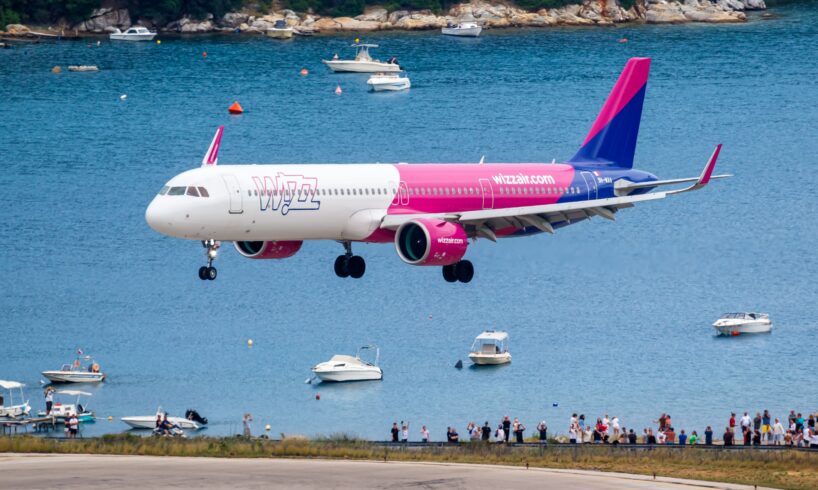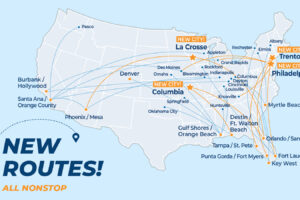
Recent times have seen Pratt & Whitney dominate the headlines concerning the world of modern commercial aviation for all the wrong reasons, as issues with the company’s engines have had significant knock-on effects at airline customers worldwide. Now, however, the firm appears to have turned a corner, having secured major votes of confidence from key players in the low-cost sector this week.
Business Type
Engine Maker
Date Founded
January 1, 1925
CEO
Christopher Calio
Headquarters Location
East Hartford, United States
Specifically, the 2025 Paris Air Show has seen Wizz Air and Frontier Airlines each commit to hundreds of the company’s Geared Turbofan (GTF) engines in order to power their Airbus A321neo aircraft. These stretched twinjets, which represent the next-generation of high-capacity narrowbodies, are playing a key role in the low-cost boom, and Pratt & Whitney will be there to help power them as they do so.
Another 177 Wizz Air A321neos Will Have GTF Engines
Photo: RTX
Hungarian low-cost giant Wizz Air is no stranger to the A321neo, with current fleet data made available by ch-aviation showing that the airline already has 80 examples of the type at its disposal. The carrier also has a long working relationship with Pratt & Whitney, and even took delivery of the 1000th GTF-powered Airbus A320neo family aircraft back in May of 2022. However, things haven’t always been rosy.
Indeed, recent issues with the company’s GTF engines, also known as the PW1100G, have forced Wizz Air to ground certain aircraft. These saw its profits sink on multiple occasions last year, but, now, the airline appears to be back on good terms. Indeed, RTX reported earlier today that Wizz had committed to powering a further 177 A321neos with the GTF engine, with CEO József Váradi explaining that:
“Our relationship with Pratt & Whitney has been instrumental in supporting our growth strategy, which will enable Wizz Air to have a fleet of 500 aircraft within a decade. GTF engine technology delivers the most economical solution, providing unmatched fuel efficiency while enabling quieter and less emitting flights for our passengers, and a lower cost base for the airline.”
The News Follows A Similar Announcement Concerning Frontier Airlines
Photo: RTX
Having already committed to powering 276 Airbus A320neo, A321neo, and A321XLR aircraft with Pratt & Whitney’s GTF engines as part of previous orders, this takes Wizz Air’s total order book with the company to 453 sets of turbofans. Over in the US, fellow low-cost giant Frontier Airlines has been a similarly loyal customer, with a total commitment of 253 GTF-powered aircraft currently on its order books.
The latest commitment that forms part of this larger total was confirmed by RTX yesterday, with Frontier signing up for another 91 sets of GTF engines to power its A321neos, of which Frontier Airlines currently has 53 in its fleet and 155 on order.
The first of these is scheduled for delivery in the fourth quarter of 2026, with “Pratt & Whitney also [providing] Frontier Airlines with engine maintenance through a long-term EngineWise Comprehensive service agreement” in order to sweeten the deal.
Related
Frontier Airlines Will Use Pratt & Whitney’s GTF Engines To Power 91 Airbus A321neos
Frontier Airlines will operate more aircraft powered by the GTF engine.
Pratt & Whitney Is Looking To Address The GTF’s Grounding Issues
Photo: Karolis Kavolelis | Shutterstock
While the recent groundings of GTF-powered aircraft have represented a far from ideal turn of events for Pratt & Whitney, the engine maker has not shied away from this, and is working hard to resolve these issues. Speaking earlier today at the 2025 Paris Air Show, Rick Deurloo, the President of Commercial Engines at Pratt & Whitney, explained that “it’s not lost on us that we have a significant AOG challenge out in the marketplace, but I can also tell you, it has 100% of our attention.”
AOG, in this instance, refers to ‘Aircraft on Ground,’ meaning when planes cannot fly due to technical issues. This is something, naturally, that engine makers and their airline customers look to avoid, with Deurloo adding that “that is our top priority, working with our customers and lifting that fleet [back into the air].”
The solution, he believes, is more Maintenance, Repair, and Overhaul (MRO) capacity worldwide, so it will be interesting to see if and how this plays out in the future.






